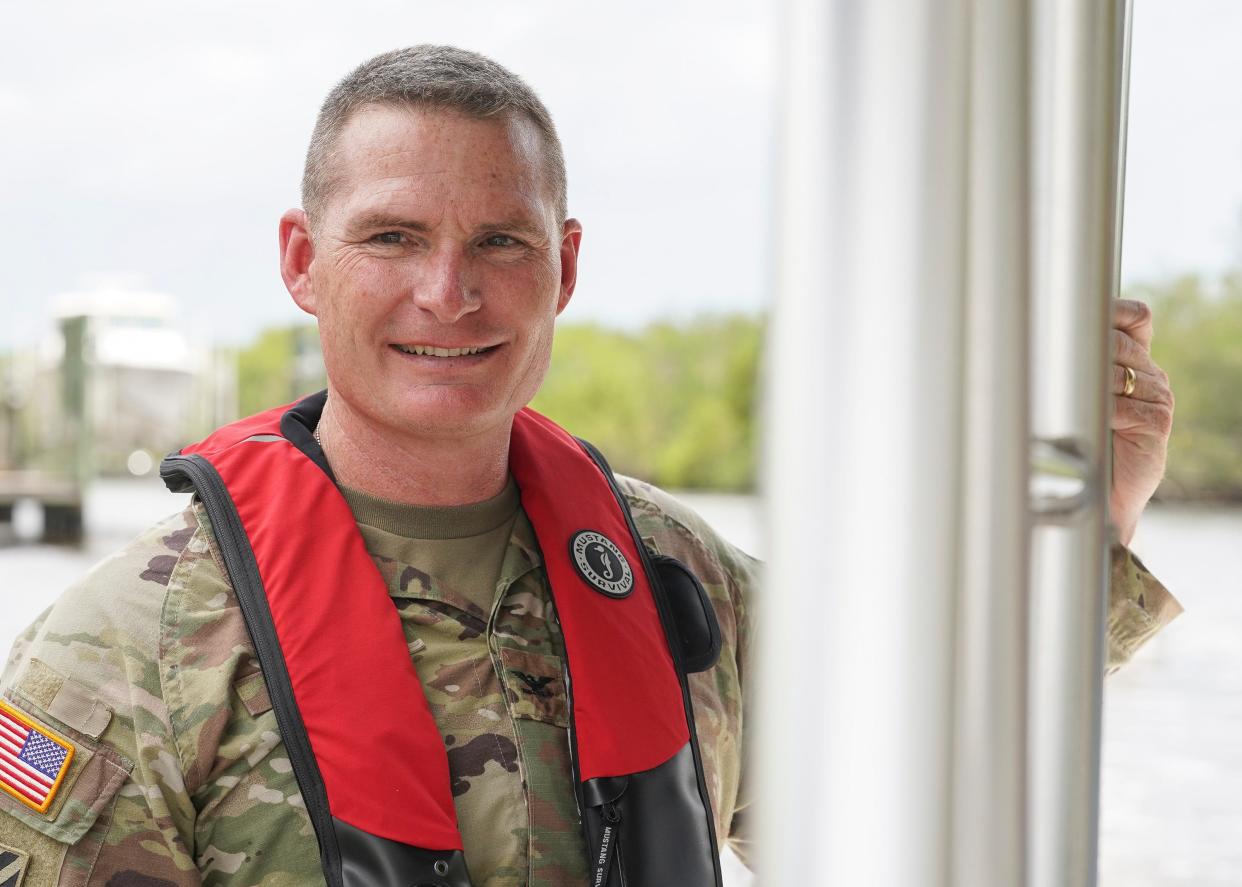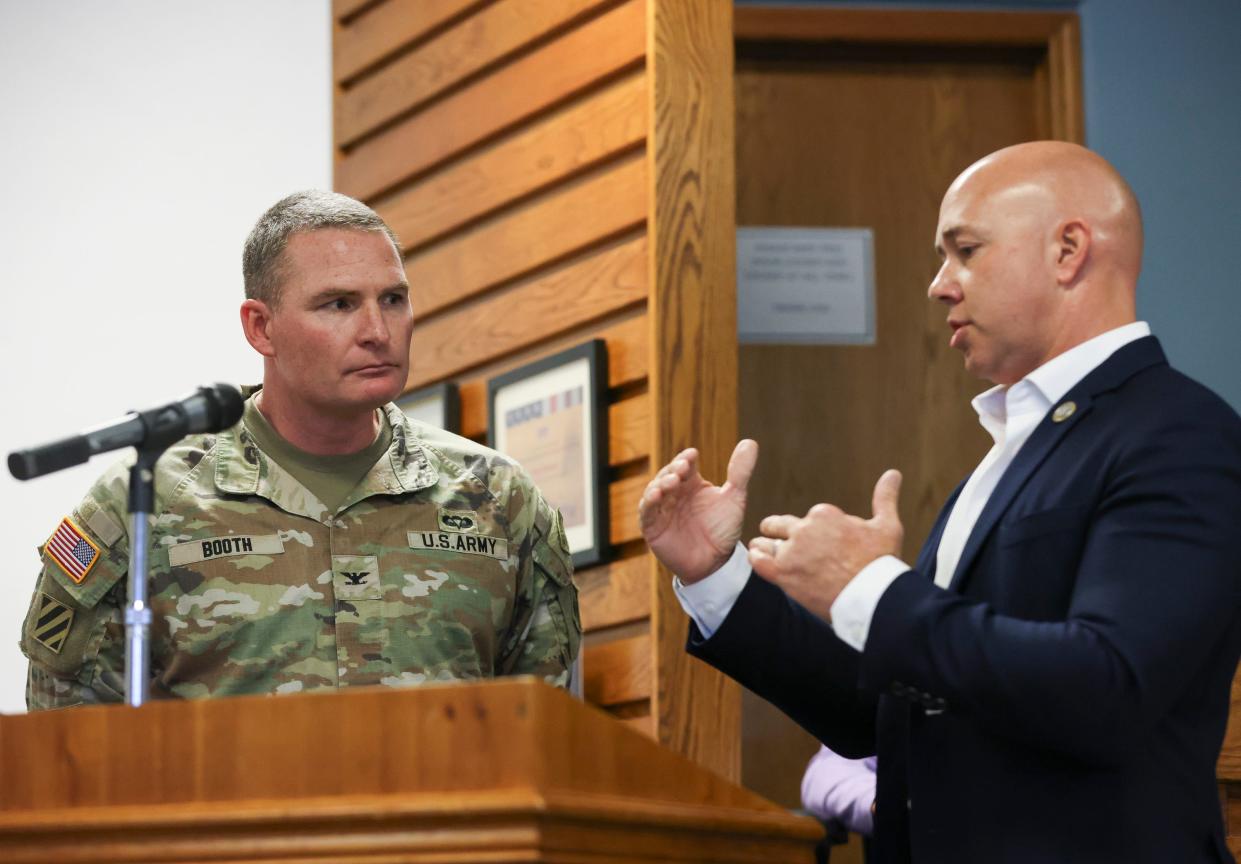Before predicted record hurricane season, Corps tries to balance discharges, flood threats
Revised forecasts for the 2024 Atlantic Hurricane Season are predicting we could potentially break the record of 30 named storms in one season. When I hear this prediction, it reinforces my decision six weeks ago to make flood risk management a priority and start increased releases out of Lake Okeechobee in all directions.
The lake must have the storage capacity to handle direct rainfall and inflows from storms during the wet season.
Four conditions are contributing to the more intense predictions — water temperatures well above historical averages, the change from El Niño to La Niña, a stronger African easterly jet stream, and changes in locations and strengths of steering winds.
Since Hurricanes Ian and Nicole in 2022 and Hurricane Idalia in 2023, my focus has been to provide ecologically beneficial releases to downstream systems and users to allow the system ample time to recover. We were able to manage the lake levels this way until the dry season this year. El Niño conditions since November did not allow Lake Okeechobee and other areas of the system to recede during the dry season as they normally would.

Rep. Brian Mast: U.S. Army Corps of Engineers has gone rogue; we're victims of Lake Okeechobee discharges
We waited as long as possible before doing high-volume releases, but we had to take advantage of the window of time remaining to move as much water off the lake as possible before oyster spawning, algal bloom and hurricane seasons. When forced to choose, I would prefer to do the releases now rather than in the summer when there are algal blooms on the lake. And while there is no guarantee we won’t have to make releases in the summer due to storm activity, we have greatly reduced the possibility.
There is no magic cure that will pop up tomorrow to fix the issue of having to make these releases to the Caloosahatchee and St. Lucie estuaries. However, the cure has been in development for years, and many components of that cure are in production.
The C-44 Reservoir is complete and going through operational testing. The Everglades Agricultural Area Reservoir is under construction. The Indian River Lagoon-South, the Central Everglades Planning Project and the C-43 Reservoir being built by the South Florida Water Management District are all underway and focused on restoring more natural flows into and through the central and southern Everglades and increasing storage, treatment and conveyance of water south of Lake Okeechobee. The Corps and Water District are also working together to study water storage north of Lake Okeechobee.
The system is better now than it was 10 years ago, and it improves every year as the unprecedented funding and construction momentum continue. This year, we anticipate awarding $3.1 billion in construction contracts to keep these Everglades restoration projects moving forward and to ensure they are operational as soon as possible, providing additional water storage and increased water flows where needed. As more storage comes online each year, our flexibility grows. More water is moving south under the Tamiami Trail than ever before. We see where we need to go, and we are working hard to get there.
We are committed to continuing this momentum with consistent transparency and inclusiveness in our operations and decision-making. We will continue to bring in our partners and stakeholders for their input into our processes. However, while many of these participants are focused on one section of the system, USACE must remain focused on balancing the needs across the entire system. That is our charter, and sometimes it requires me to make tough decisions.

We understand the current lake releases are stressful for the St. Lucie and Caloosahatchee River estuaries as well as the Lake Worth Lagoon and adjacent communities. We know from our consistent engagement with stakeholders that water quality remains one of your significant concerns. As such, it is also one of the principal considerations integrated into our decision-making as we strive to balance the multiple project purposes for Lake Okeechobee water management.
A two-week long rest period began March 30 to allow the estuaries to recover. Unless conditions significantly change, flows after the rest period will be less than the current flows.
We thank our partners in Florida for working with us to advance and invest in long-term solutions with ecosystem restoration projects underway to restore the Everglades and limit releases into all of Florida’s estuaries. And we thank you for your patience in enduring this short-term pain to help protect your fellow Floridians from the possible loss of life and property due to flooding.
Col. James L. Booth is commander of the U.S. Army Corps of Engineers, Jacksonville District

This article originally appeared on Treasure Coast Newspapers: Saving lives, property requires tough decisions on Lake O releases
